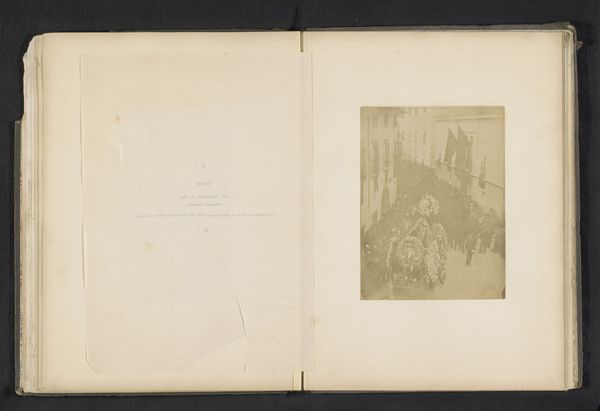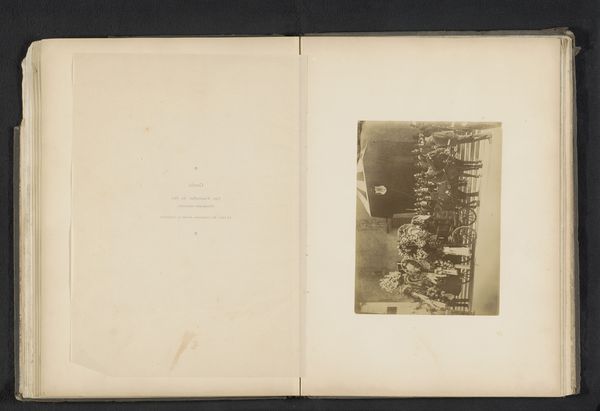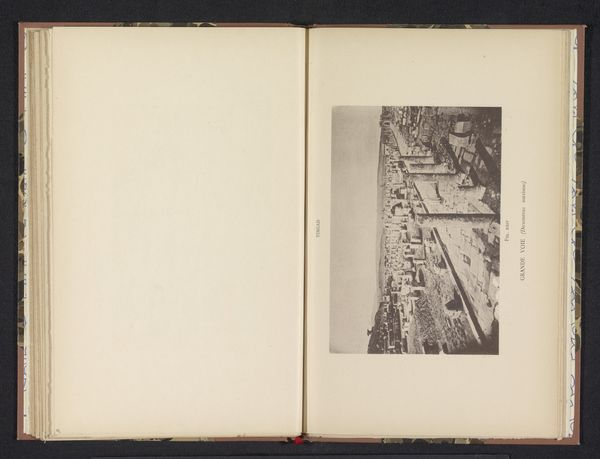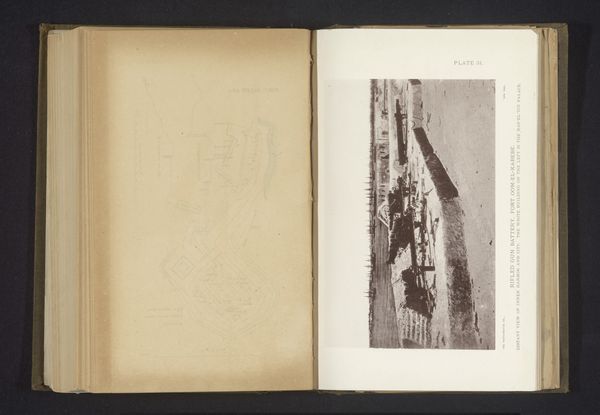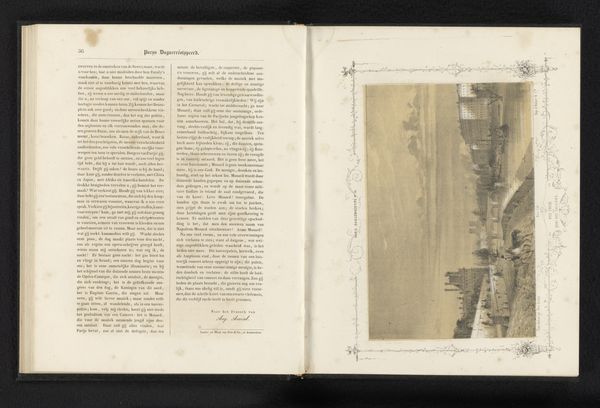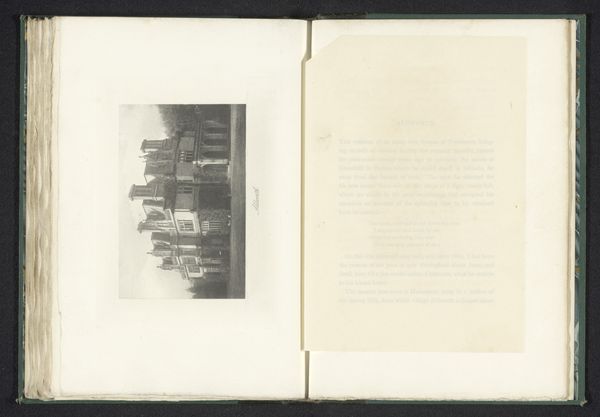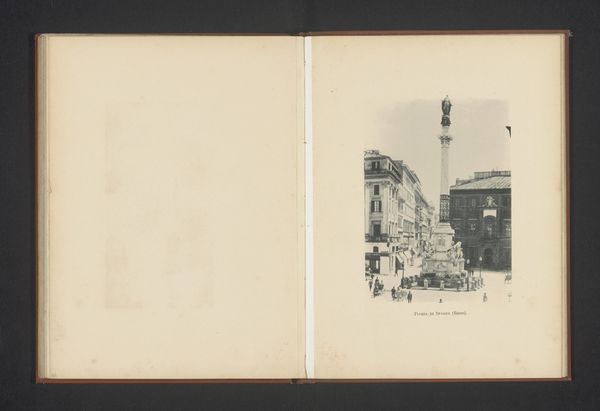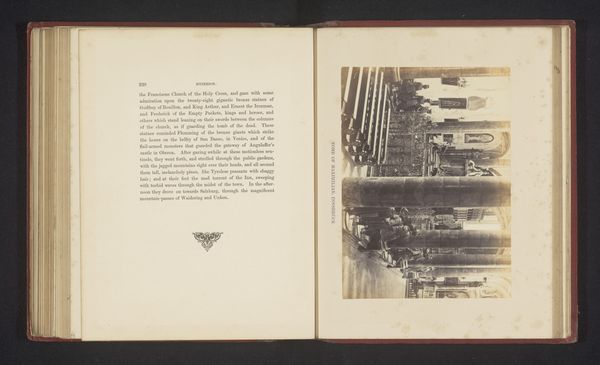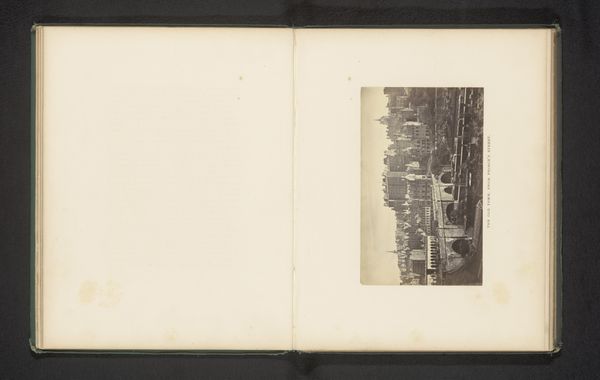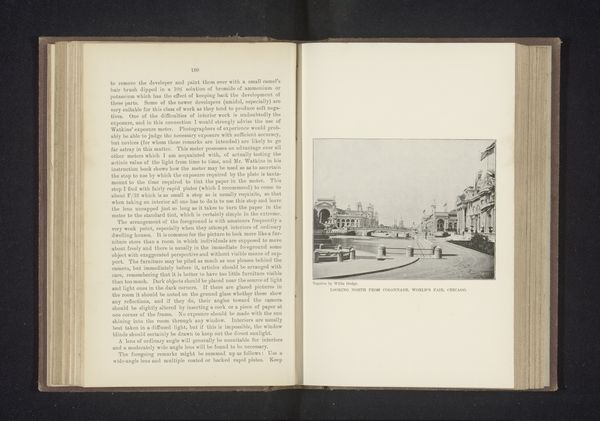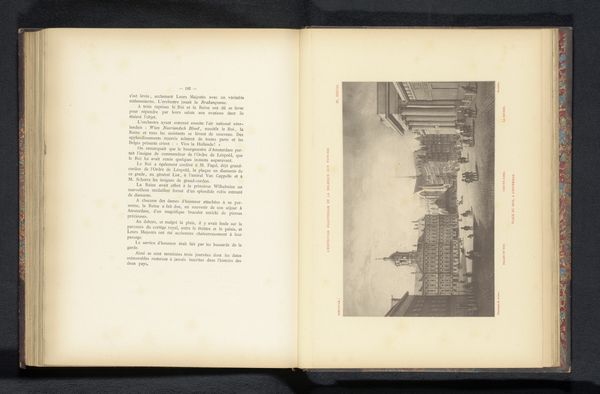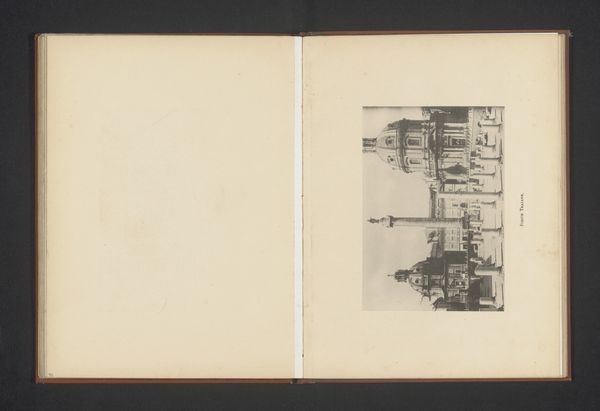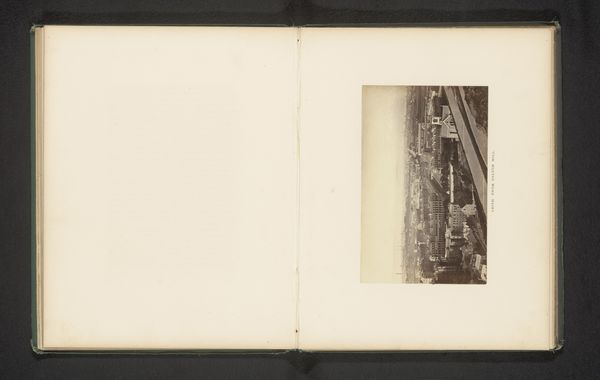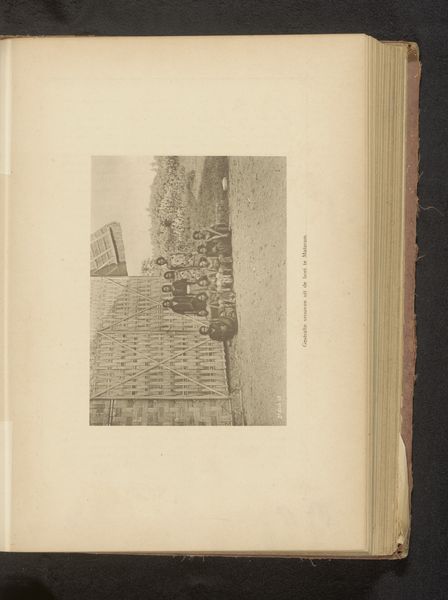
photography, albumen-print
#
aged paper
#
homemade paper
#
16_19th-century
#
paperlike
#
sketch book
#
hand drawn type
#
landscape
#
paper texture
#
photography
#
personal sketchbook
#
hand-drawn typeface
#
thick font
#
cityscape
#
history-painting
#
albumen-print
#
realism
#
historical font
Dimensions: height 208 mm, width 155 mm
Copyright: Rijks Museum: Open Domain
Curator: Let's consider this photograph titled "Begrafenisstoet van Henri d'Artois", taken before 1883 by A. Vallois. It appears to be an albumen print within an album. Editor: It’s captivating. The procession recedes into the distance, its tonality shifting from detailed in the foreground to almost abstract in the background. Curator: Precisely. Henri d'Artois, also known as the Count of Chambord, was a significant figure in French royalist circles. His death marked the end of a line of succession and a certain political ideology. The image, framed as a page within a personal sketchbook, adds to its intimate feel. Editor: Note how Vallois used the albumen print to emphasize certain lines and textures. The cobblestone street leads our eye directly to those flags. There’s a real depth created despite the photographic medium, as if Vallois is intentionally trying to mimic the visual experience of being there. Curator: And that "being there" is key. Photography in this era was deeply entwined with political documentation and memorialization. Vallois likely intended this image not just as art, but as a historical record circulated within royalist communities to reinforce their sense of identity and continuity after the Count’s death. It acted as propaganda of sorts. Editor: Propaganda perhaps, but what I see at first glance are the diagonals—the lines of buildings, the downward slope of the road all point toward that dense vanishing point. And look at the sharp, almost gritty contrast between the sunlit buildings and the procession shadowed down the middle of the street. This use of contrast creates depth. Curator: Absolutely. It highlights the spectacle of public mourning while subtly referencing the political vacuum created by Chambord's passing. How intriguing it all comes together within the physical album! We're invited to reflect on the intersection of personal remembrance, collective identity, and photographic representation. Editor: Well, I was initially taken by its elegant and austere form, but considering its political context definitely adds to my appreciation of its many layers. Curator: Indeed, appreciating art requires sensitivity to both formal elements and historical meaning. It makes all the difference in what this photo communicates.
Comments
No comments
Be the first to comment and join the conversation on the ultimate creative platform.
